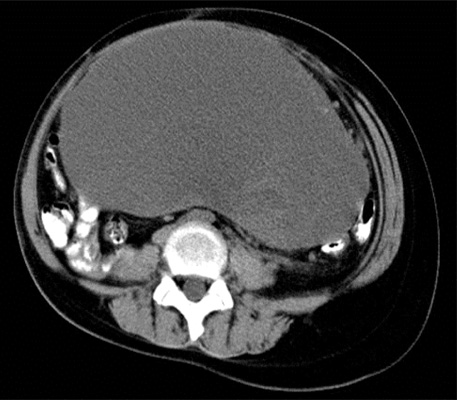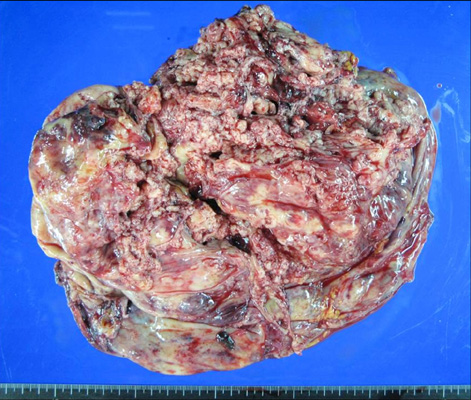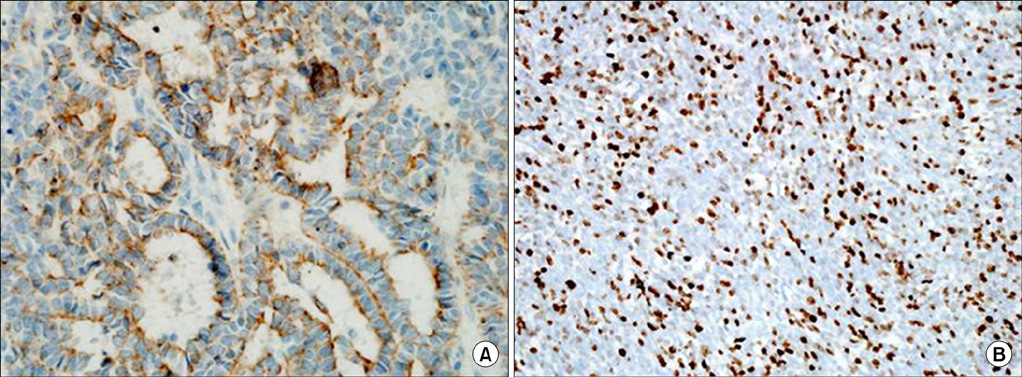Korean J Urol.
2012 Apr;53(4):288-292.
Wilms' Tumor with Long-delayed Recurrence: 25 Years after Initial Treatment
- Affiliations
-
- 1Department of Pathology, Asan Medical Center, University of Ulsan College of Medicine, Seoul, Korea. soyounglee99@gmail.com
- 2Department of Obstetrics and Gynecology, Asan Medical Center, University of Ulsan College of Medicine, Seoul, Korea.
- 3Department of Pathology, The Methodist Hospital, Cornell University, Weill Medical College, Houston, TX, USA.
Abstract
- Wilms' tumor is one of the most frequent malignant neoplasms in childhood. Advances in treatment modalities such as the combination of chemoradiation therapy with surgery have enhanced overall survival. However, recurrence of Wilms' tumor is still a problem. In this case, a 28-year-old female had experienced intermittent abdominal pain, and the computed tomography scan showed a huge pelvic mass. The patient had a history of radical nephrectomy for Wilms' tumor with concurrent chemotherapy at the age of three. The pelvic mass was resected in February 2010 and was confirmed to be a recurrent Wilms' tumor. The recurrent tumor showed a classic triphasic Wilms' tumor growth pattern with frequent mitoses and tumor necrosis. Our case is an extraordinary case of a long-delayed recurrent Wilms' tumor after 25 years, which is the longest disease-free interval ever reported. The possible effects of chemotherapy as well as some other mechanisms of this late relapse are discussed.
Keyword
Figure
Reference
-
1. Senetta R, Macrì L, Pacchioni D, Castellano I, Cassoni P, Bussolati G. Late recurrence of Wilms' tumour with exclusive skeletal muscle phenotype 23 years after primary diagnosis. Virchows Arch. 2007. 450:115–118.2. Dome JS, Liu T, Krasin M, Lott L, Shearer P, Daw NC, et al. Improved survival for patients with recurrent Wilms tumor: the experience at St. Jude Children's Research Hospital. J Pediatr Hematol Oncol. 2002. 24:192–198.3. Green DM. The treatment of stages I-IV favorable histology Wilms' tumor. J Clin Oncol. 2004. 22:1366–1372.4. Li W, Kessler P, Yeger H, Alami J, Reeve AE, Heathcott R, et al. A gene expression signature for relapse of primary wilms tumors. Cancer Res. 2005. 65:2592–2601.5. Sen S, Kadamba P, Al-AbdulAaly M, Mammen KE, Ahmed S. Results of Wilms' tumour management in two tertiary-care hospitals in Asia. Pediatr Surg Int. 1998. 13:42–44.6. Brown E, Hebra A, Jenrette J, Hudspeth M. Successful treatment of late, recurrent wilms tumor with high-dose chemotherapy and autologous stem cell rescue in third complete response. J Pediatr Hematol Oncol. 2010. 32:e241–e243.7. Gottesman JE, Pellettiere EV, Kilmer W. Recurrence of Wilms tumor-twenty-three years later. Urology. 1981. 17:268–269.8. Gallego-Melcón S, Sánchez de Toledo J, Doste D, López D, Moraga F, Rodríguez C, et al. Late recurrent metastasis in Wilms' tumour. Med Pediatr Oncol. 1994. 23:158–161.9. Pinarli FG, Oğuz A, Karadeniz C, Poyraz A, Konuş O, Citak C. Late relapsing Wilms tumor with rhabdomyomatous differentiation. Pediatr Blood Cancer. 2009. 52:675–677.10. Gibson PJ, Vadeboncoeur CM, Johnston DL. Relapse of Wilms' tumor 13 years after original diagnosis. J Pediatr Hematol Oncol. 2005. 27:293–294.





